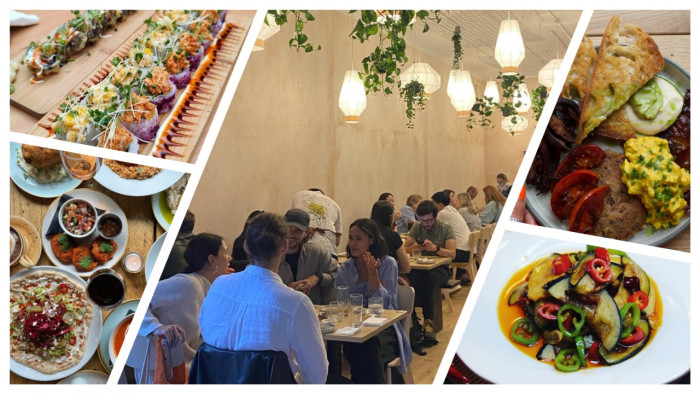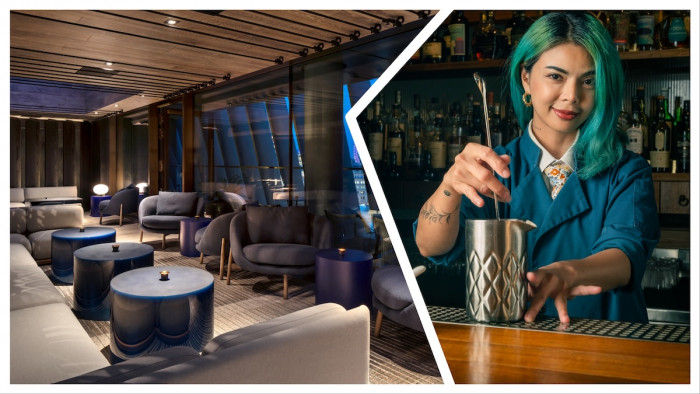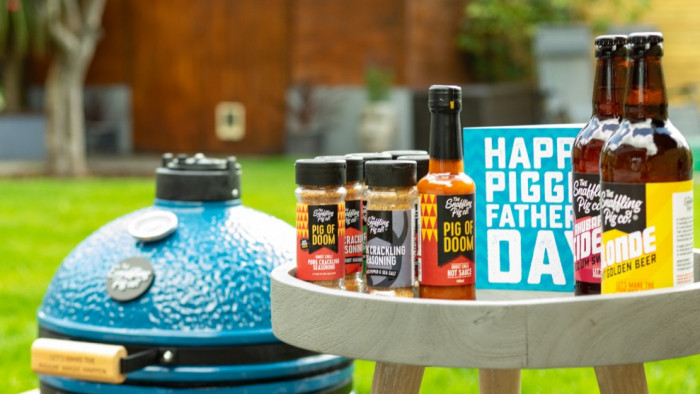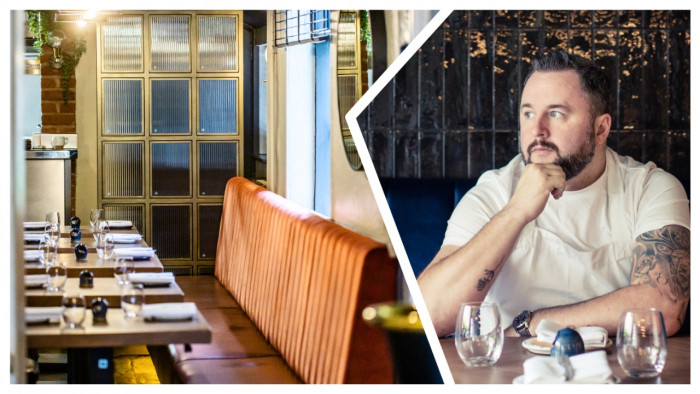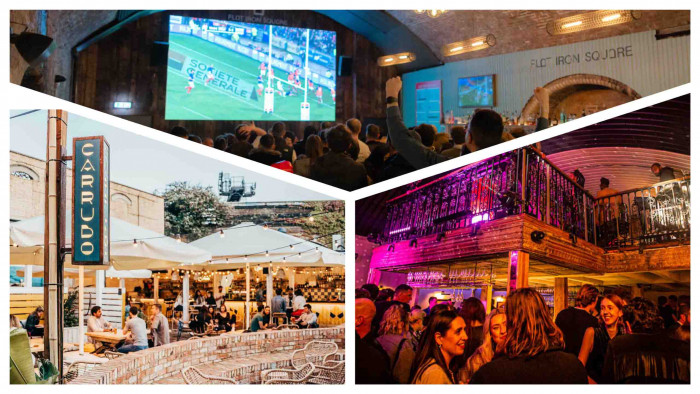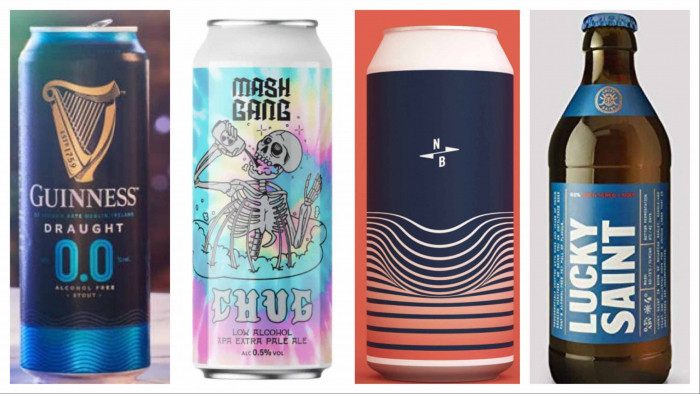11 of the world's most unique Michelin-starred restaurants
From unassuming venues to downright wacky dishes


We’ve all heard of the Fat Duck, Noma and The French Laundry. But what about those hidden gems scattered around the Michelin Guide and the restaurants you might not expect to have been recognised?
Here, covering pubs, street food stalls and a restaurant perched above a clothes shop, we take a look at some of the more unlikely, and unusual, star holders in the famous restaurant bible.

The Man Behind The Curtain, Leeds
“Pay no attention to that man behind the curtain!” the Wizard of Oz shouted into his microphone as Toto the dog discovered the not-so-wonderful man of magic was a fraud. It’s a not-so-subtle hint that chef Michael O’Hare wants you to pay all your attention to what’s on his incredible plates than what’s in the kitchen at his restaurant, above an unassuming clothes shop in Leeds (obviously). The chef, who shot to fame after winning the fish course on Great British Menu, ironically gained even more attention for his hair (he has since chopped it all off) than his food but oh my, what food. Dishes are more like striking works of art than edibles, and not in that pretty, delicate, nouvelle cuisine style – these are bold, bitching, often black and white dishes that punch you in the face before you even taste them. O’Hare won his first Michelin star in 2015. And while we’re at it, here are some other corking Leeds foodie haunts.

Mugaritz, Gipuzkoa, Spain
In Spain’s San Sabastian, arguably the foodie capital of the world (though with far fewer headlines than the likes of Paris, Tokyo and New York), restaurants jostle for first place like thoroughbreds in the National. Leading the pack is Mugaritz, a restaurant with a similarly creative vein to the likes of Noma and previously El Bulli. On the menu are edible stones – perhaps the best molecular gastronomy we’ve ever laid eyes on – candy caviar and delicate and one beautiful snail dish – snails in ceviche over a frozen teff. It’s been named the seventh best restaurant in the world and holds two Michelin stars.

Faviken, Järpen, Sweden
It’s a wonder the Michelin inspectors even found Faviken, let alone hand it two stars. But, among the snow drifts and silence of Järpen in Sweden – otherwise known as the middle of nowhere – they did. Chef Magnus Nilsson uses beautiful local produce, traditional preparation methods and, perhaps most famously, a lot of pickled and cured ingredients to make his menus, all served in the beautiful 19th-century Faviken estate. The restaurant also placed 41st in The World’s 50 Best Restaurants list.

Quince, San Francisco
Plates are so 2015. Quince serves one of its dishes on an iPad. AN IPAD. Yep, forget roofing tiles and driftwood, the restaurant has leapt into the future with its take on an autumnal snack called ‘A Dog in Search of Gold’, serving a “chestnut crisp and a celeriac, porcini and ricotta truffle’ dusted with porcini powder” on the gadget. But if you think this San Francisco stalwart is all gimmick and no trousers, think again, it has an impressive three Michelin stars.

Harwood Arms, London
What’s unique about this, you’re quite rightly wondering. Well, it’s a pub you might have otherwise walked past or gone to eat in without knowing. Yep, this unassuming little boozer tucked away on the backstreets of Fulham was the first, and is still the only, Michelin-starred pub in London. It still serves nuts at the bar but, if you can manage to book a table, then prepare to enjoy St John-like British fare (crispy brawn, roast lamb) from the ever-changing menu. Its only downside? You might have to put up with Chelsea fans on match days.

Alinea, Chicago
If a waiter drops your food on the table, you usually ask for your money back, much less give his place of employ three Michelin stars. But here, they drop it and turn it into a work of art. Then you eat it. OK, OK, it might sound corny, but once you see the incredible tables of food produced by Alinea’s chefs, headed by Grant Achatz – who lost and then regained his sense of taste after surviving cancer – you begin to understand why Michelin rave about it.

D.O.M, São Paulo
Bearded man-crush fodder Alex Atala’s restaurant (11th in The World’s 50 Best Restaurants list) might not look like an unlikely Michelin choice until you take a closer look at some of his weird and wonderful dishes. Atala has become famous in food circles for his use of traditional Brazilian cooking methods and ingredients, including delicious (they really are) ants. Fortunately, inspectors weren’t squeamish and handed him two shiny stars.

Hong Kong Soya Sauce Chicken Rice and Noodle, Singapore
In July 2016 the world learned you could buy a Michelin star meal for £1.60. For the first time in the guide’s history, it named two hawker stalls (the other was Hill Street Tai Hwa Pork Noodle) in the Singapore Michelin guide. Its modest owner-cum-head chef, Malaysian-born Chan Hon Meng, only serves a handful of dishes, including Cantonese soya sauce chicken and BBQ pork. He used to sell 180 chickens a day to fans who queued around the block for a bite – we’re willing to bet it’s probably a few more these days.

Sukiyabashi Jiro Honten, Tokyo
You might have seen Jiro Dreams of Sushi, the deadly serious documentary about ‘left-handed master craftsman’ Jiro Ono, a sushi magician who has dedicated his life to the art of stunning sushi preparation and service. But forget restaurants in soaring, glittering skyscrapers or pretty, traditional townhouses – Jiro’s restaurant is situated within a busy metro station (Ginza). Such is its intimacy, only a handful of people can eat there at a time. This didn’t stop Michelin inspectors from handing it a rare three stars though.

St John, London
Somewhat of a cult destination for *shiver* foodies, Fergus Henderson’s famous ‘nose to tail’ dining philosophy has made this a destination restaurant. Just off Smithfield’s meat market, his chefs prepare dishes such as his famous bone marrow on toast, or devilled kidneys, or Eccles cake and Lancashire cheese in the vast white expanse of a converted smokehouse. Despite its kick-back, smart-casual nature, it’s held a star since 2012.

Yorozuya Okagesan, Tokyo
Michelin inspectors are Japanophiles; there’s no getting around it. Tokyo and Kyoto share first and second place for cities with the most Michelin stars, and in the capital, more than 225 restaurants hold at least one. That’s partly down to the sheer number of restaurants but also, of course, due to the sheer quality. The unassuming – and notoriously difficult to find – Yorozuya Okagesan izakaya (a Japanese ‘pub’, only with better food and less pork scratchings) is one such venue. Tucked away in a faceless building, you’d never guess you could find stunning Michelin starred food in its basement, but that’s exactly what chef Yasutoshi Kanzaki serves as ‘omakase’ (chef’s set menu) along with top quality sakes.
Latest
Related Reviews and Shortlists

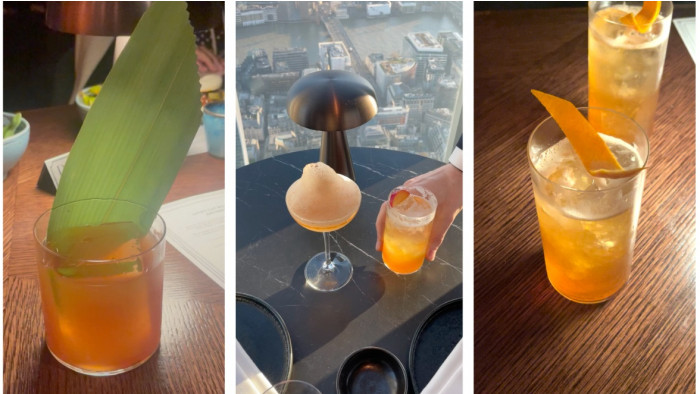
Behind the bar at Lucky Cat

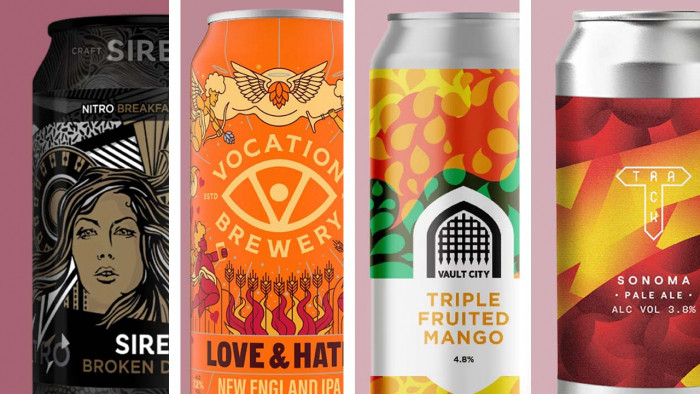
The best craft beers: 17 of the best beers

